Mulberries 101: Your Go-To Guide for Finding and Using This Amazing Fruit
I’ll never forget my first real run-in with a mulberry tree. It wasn’t in some fancy orchard, but tucked away behind an old workshop I was helping a friend clean out. This tree was massive, gnarled, and totally ignored by everyone. But every summer, it would just drop this incredible carpet of dark purple fruit, staining the concrete a deep wine color. Most people saw it as a messy nuisance. I saw it as a goldmine.
In this article
For years now, I’ve been working with plants, from big farm operations to backyard homesteads, and I’m still convinced the mulberry is one of the most generous and toughest trees out there. It’s a real survivor.
A lot of articles will tell you mulberries are healthy, but they don’t get into the good stuff. They don’t capture the difference between a sun-warmed, tangy Black Mulberry and a honey-sweet White Mulberry. And they definitely don’t tell you how to harvest them without looking like you just tie-dyed your hands and clothes. That’s the kind of stuff you learn from experience, shaking branches onto an old bedsheet on a hot afternoon.
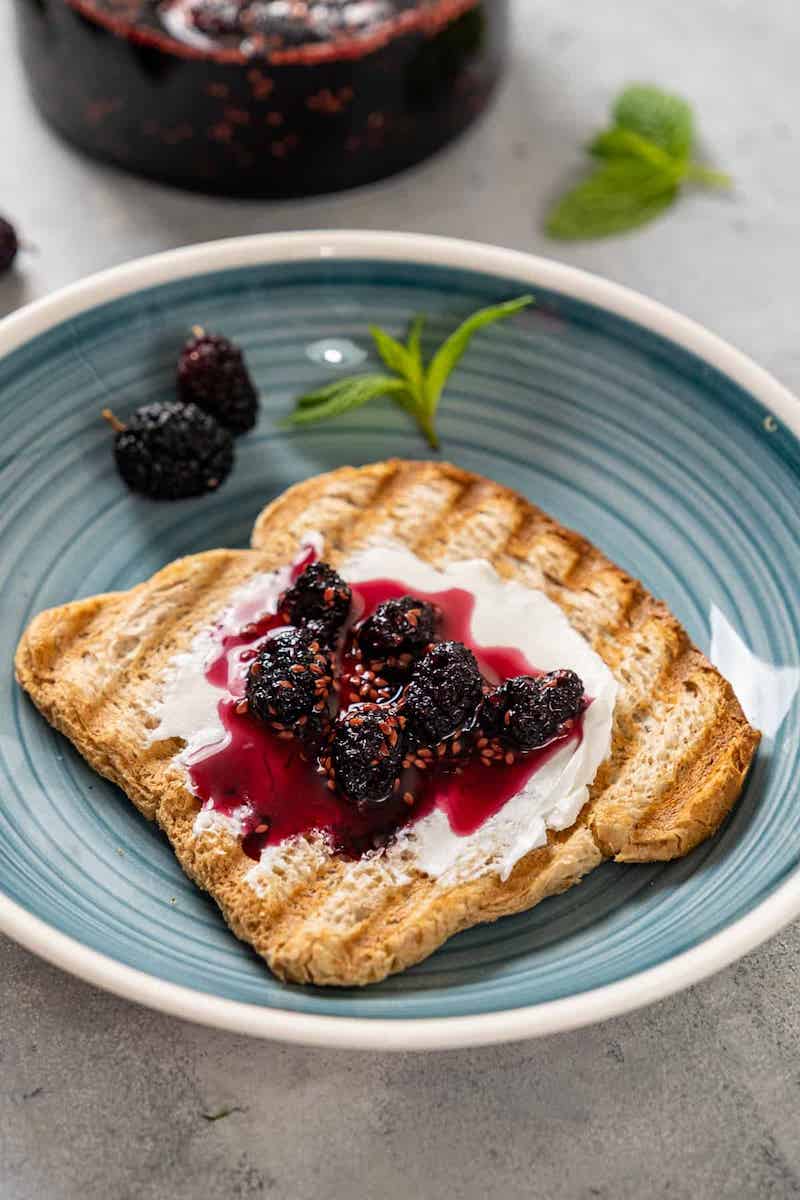
So, this is the guide I wish I’d had. We’re going to dig into the three main types you’re likely to find, talk about what makes them tick, and cover the real-world tips for harvesting and using them. I’ll also give you a heads-up on their downsides, because no plant is perfect. This is the practical knowledge you need to really appreciate this amazing fruit.
Getting to Know the Mulberry Family
Before you start dreaming of pies and jams, it’s super helpful to know what you’re working with. The mulberry is part of the fig family, which is pretty cool. Figuring out which type you have on your hands is key because it changes everything—the flavor, how you’ll use the fruit, and how the tree behaves in your yard.
Let’s break down the big three.
The Black Mulberry: The Flavor King
Honestly, this is the crown jewel of the mulberry world when it comes to taste. Originating from parts of Western Asia, it’s the one you read about in traditional texts for a reason. The fruit is fat and juicy, often over an inch long—about the size of the top of your thumb. The flavor is incredible; it’s a powerful mix of sweet and tart that’s almost like a blackberry and a grapefruit had a baby. Delicious.

The tree itself is a slow-grower and can live for a very long time, often developing a beautiful, crooked, spreading shape. The downside? “Slow-growing” means you need patience. Don’t expect to get a significant amount of fruit for at least 5 to 7 years after planting. Because it’s so slow and the fruit is so delicate, it’s not a commercial favorite.
Good to know: Finding one of these trees for sale can be a bit of a hunt. You’ll rarely see them at big box stores. Your best bet is a specialty online nursery. Expect to pay a bit more for a sapling, maybe between $40 and $80, but in my opinion, it’s worth every penny for that flavor.
The White Mulberry: The Controversial Cousin
This one has a fascinating backstory. It originally came from China and was spread across the globe along historic trade routes because its leaves are the main food for silkworms. It was even brought to the Americas in an effort to kickstart a silk industry. That plan fizzled out, but the tree absolutely thrived. A little too well, in fact.

Today, it’s considered an invasive species in many areas. Why does that matter? Well, it aggressively cross-pollinates with our native Red Mulberry, creating hybrids that dilute the native genetics. It can also form dense thickets that muscle out other local plants.
Now, for the big question: if you have one, should you chop it down? And is the fruit safe? The fruit is perfectly edible! In fact, it’s often very sweet, with a mild, honey-like flavor, though it lacks the tart punch of the Black Mulberry. So, enjoy the fruit, but maybe think twice about planting a new one, and consider managing its spread if it’s dropping seeds everywhere.
The Red Mulberry: The Native One
This is North America’s native mulberry. It’s a beautiful, large tree that has been a food source on this continent for centuries. The fruit is sweet and mild, somewhere between the intense Black Mulberry and the sugary White Mulberry. It’s a fantastic, well-balanced fruit. The tree itself is a key part of its native ecosystem, but as I mentioned, it’s under threat from the invasive White Mulberry.
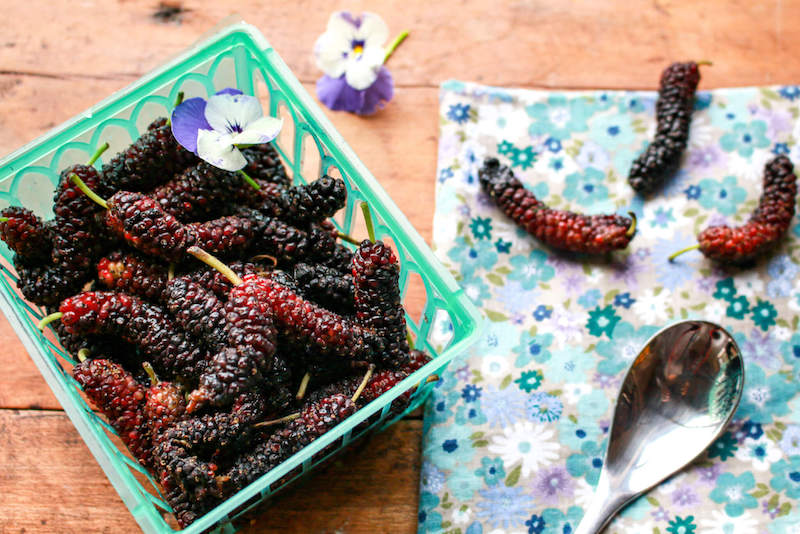
The Easiest Way to Tell Them Apart
Okay, so you’re standing in front of a mulberry tree. How can you tell which one it is? Forget complicated charts. Just use your hands.
Here’s a quick tip I teach everyone: the leaf-touch test. It’s surprisingly accurate.
- Flip a leaf over. If the underside feels fuzzy or downy, almost like flannel, you’re likely looking at a native Red Mulberry.
- Now feel the top of the leaf. Is it ridiculously rough, like actual sandpaper? That’s the classic sign of a Black Mulberry.
- If the leaf feels mostly smooth on both sides (maybe slightly hairy on the bottom veins but not fuzzy overall), you’ve probably found a White Mulberry.
It’s that simple! This little trick is more reliable than fruit color, since the fruit of a “White” Mulberry can ripen to purple or black, which confuses a lot of people.
A Few Pro Tips Before You Plant or Pick
I’ve learned a few things the hard way over the years. Here are some tips to save you some trouble.

Heads up! The Golden Rule of Planting.
Whatever you do, NEVER plant a mulberry tree near a driveway, patio, walkway, or anything else you don’t want stained a deep, permanent purple for three months a year. Trust me on this. Birds will also help distribute the staining potential far and wide. Plant it over grass or a well-mulched area where the fallen fruit won’t cause a problem.
A Lesser-Known Trick for Gardeners.
Want the incredible flavor of a Black Mulberry but the fast, hardy growth of a White Mulberry? You can have both! Many expert growers graft branches from a Black Mulberry onto the rootstock of a White Mulberry. It gives you the best of both worlds. You can sometimes buy these pre-grafted trees from those specialty nurseries I mentioned.
Harvesting Without the Mess.
Mulberries don’t pick like raspberries; the ripe ones fall right off the tree at the slightest touch. So, don’t bother trying to pick them one by one. The best method is to lay an old, clean bedsheet or a large tarp on the ground under the branches. Then, just give the branches a gentle shake. The ripe berries will rain down onto your sheet. All you have to do is gather it up and pour your harvest into a bucket. Easy, fast, and it keeps your fingers (mostly) clean!
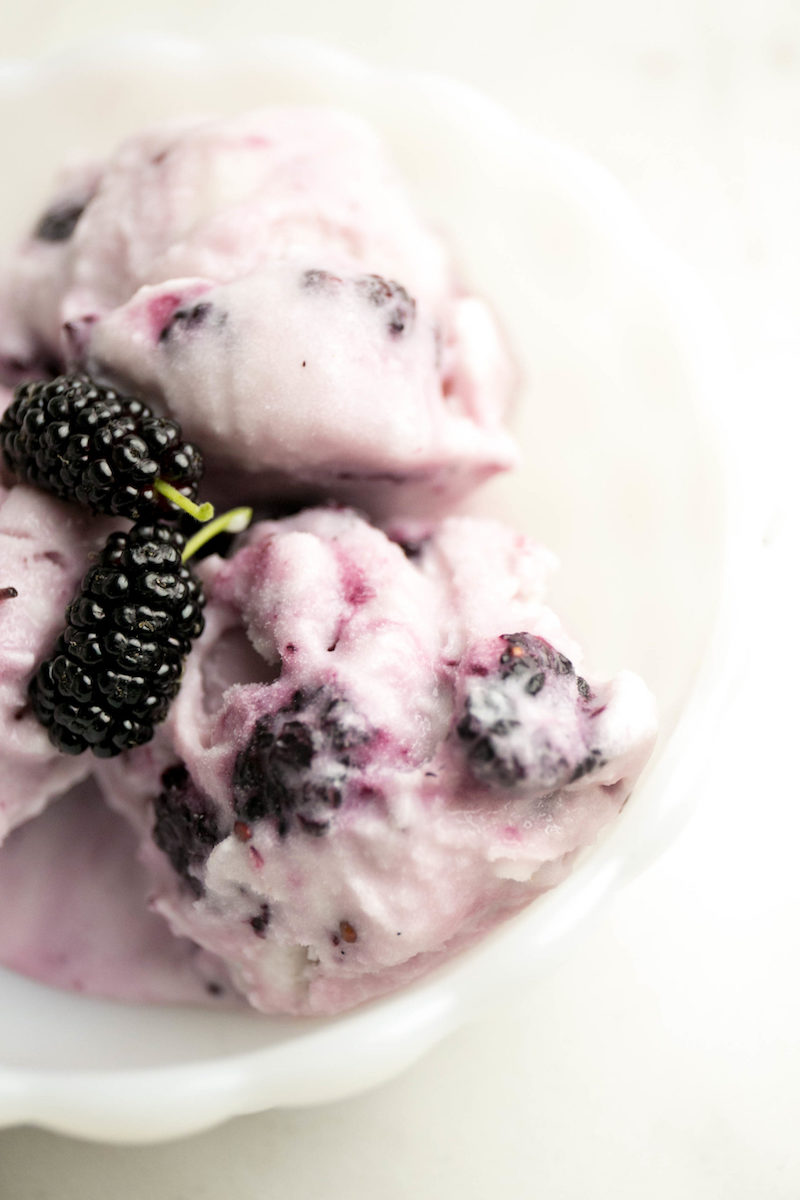
Inspirational Gallery
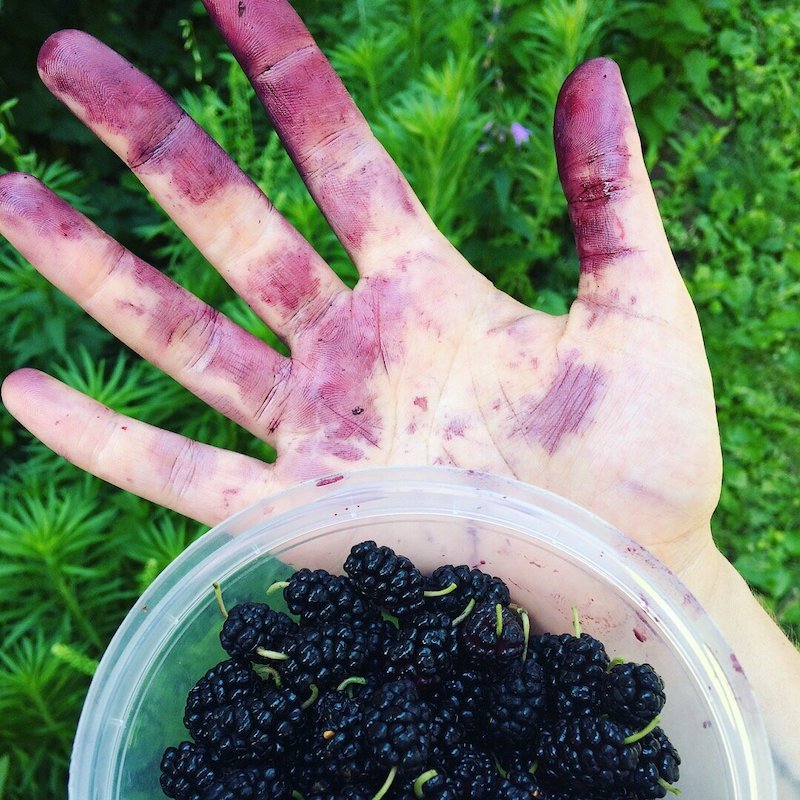
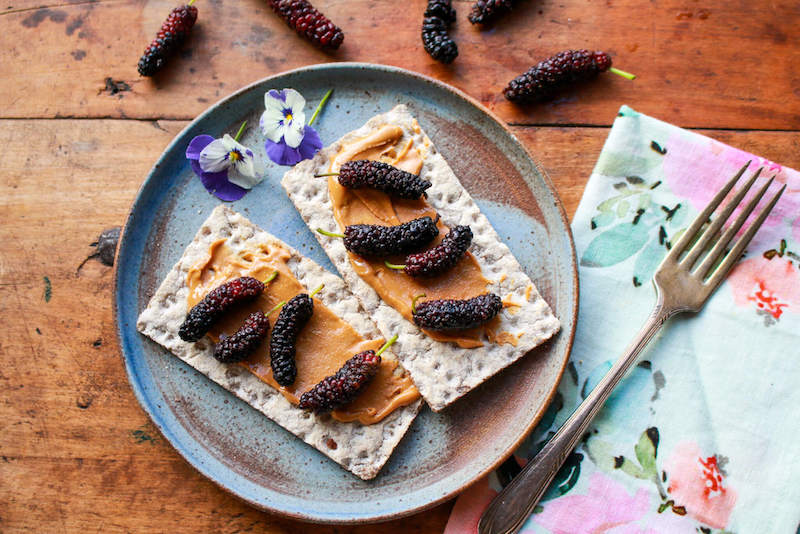
Overwhelmed by mulberry recipes that all seem to end in jam?
Consider making a mulberry shrub. This isn’t a bush in your garden, but a tangy, sophisticated drinking vinegar. The process is simple: macerate fresh mulberries in sugar for 24 hours to create a rich syrup. Strain out the solids, then mix the syrup with a high-quality apple cider vinegar, like Bragg or Fairchild’s. The sweet-tart profile of black mulberries is a perfect match for the vinegar’s acidity. Diluted with sparkling water, it creates a refreshing, complex non-alcoholic spritz that’s a world away from a simple juice.
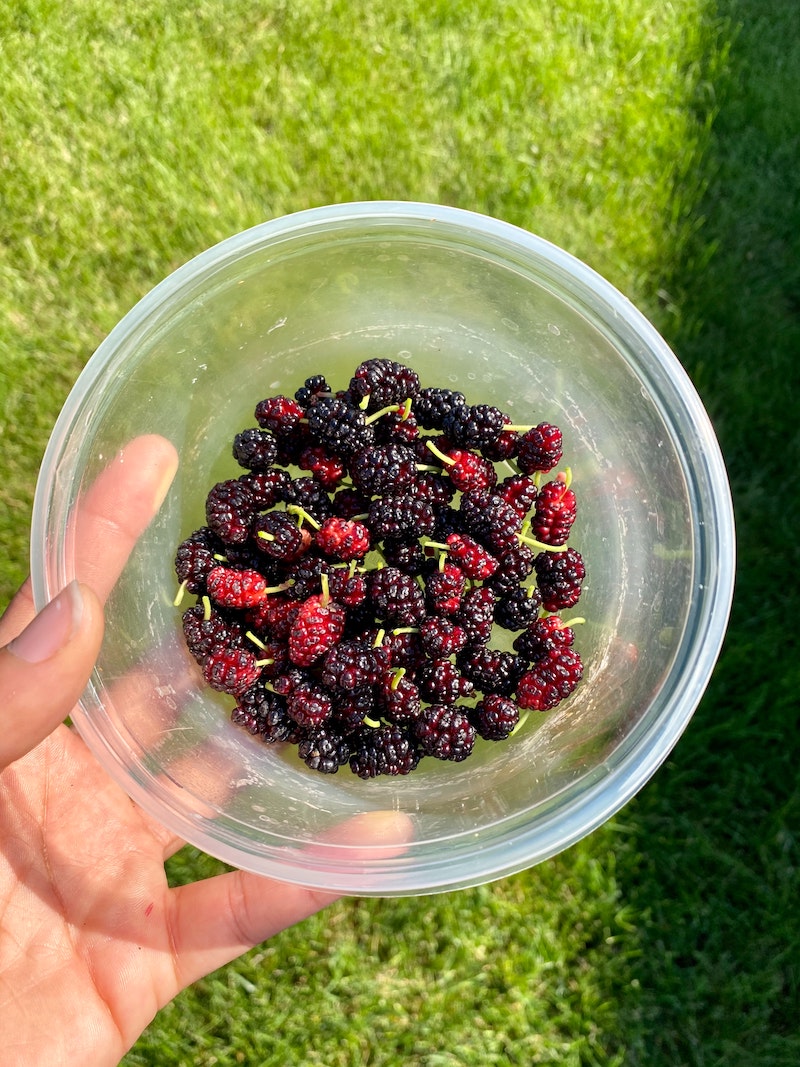
For centuries, the primary value of the mulberry tree wasn’t its fruit, but its leaves. The entire silk industry was built upon the foliage of the White Mulberry (Morus alba).
It’s an incredible link between botany and commerce. The domestic silkworm, Bombyx mori, has a diet so specialized it almost exclusively consumes white mulberry leaves. This unique relationship is why the tree was carried from its native China along the ancient Silk Road, establishing itself across Asia, the Middle East, and Europe. Every White Mulberry tree is a living testament to this history of luxury, trade, and craft.
The Tarp Harvest: The most common method. Spread a large, clean tarp or an old bedsheet under the tree and shake the branches. It’s efficient for collecting large quantities quickly, ideal for jams or wine.
The Water Bucket Method: For berries you want to keep pristine for tarts or garnishes. Take a small bucket of cool water with you. Before picking a ripe cluster, dip your fingers in the water. This simple trick prevents the juice from instantly absorbing and staining your skin, keeping your hands and the berries cleaner.










